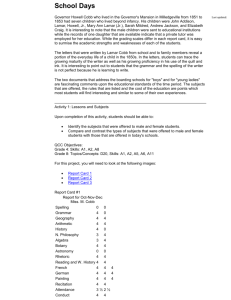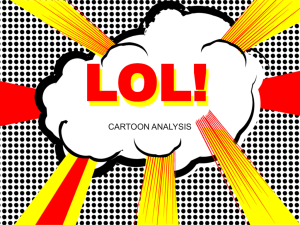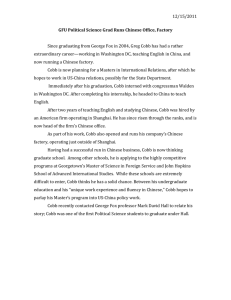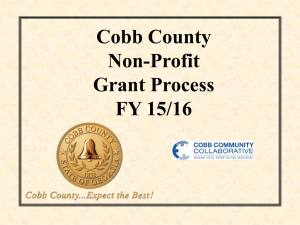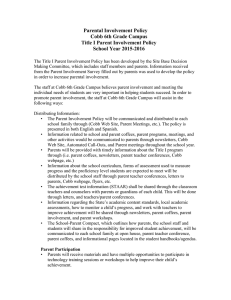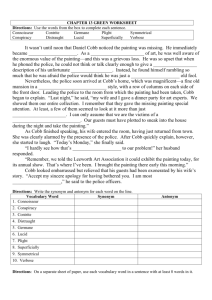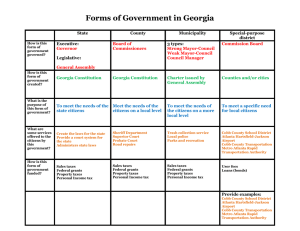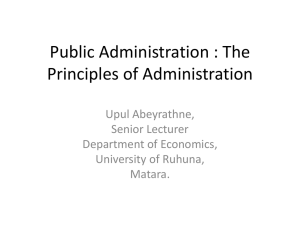Agenda Setting - Faculty of Humanities & Social Sciences
advertisement
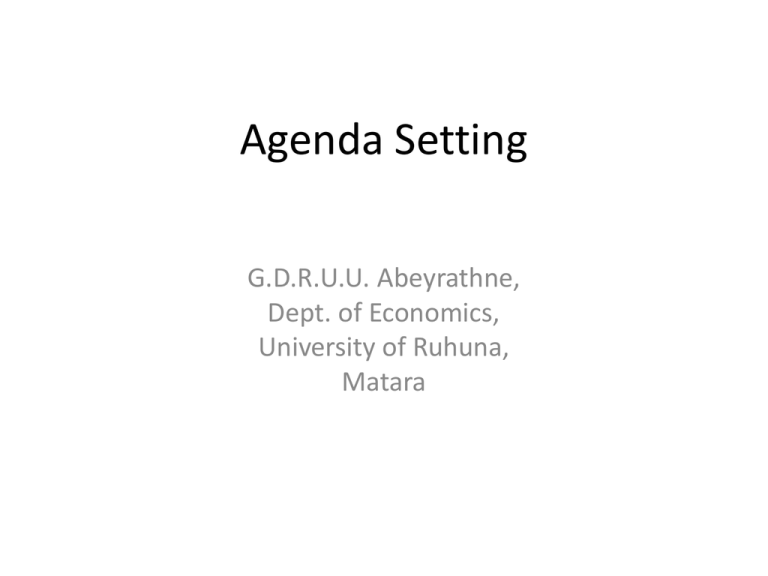
Agenda Setting G.D.R.U.U. Abeyrathne, Dept. of Economics, University of Ruhuna, Matara Key Terms • Policy Formation: the total process of creating or forming a public policy. • Policy Formulation: It refers to the more discrete stage of adopting a proposed course of action for dealing with a public problem. • Early researchers had concerned much with policy adoption. At present, more attention is paid on how issues get into the agenda What have they researched? • Why some issues get into the agenda? • Why some issues does not reached to the stage of agenda setting? Conditions to be met • It has to reach crisis proportions and could not be ignored. • It has achieved particularity. It is the issue exemplifying and dramatizing a large issue such as ozone depletion and global warming. • It has an emotive aspect. That is human interest angle. • It has wide impact. • It raises the question about power and legitimacy • It has to be fashionable. • Agenda setting is set of political controversies that will be viewed as falling within legitimate concern meriting the attention of the polity, a set of items scheduled for active and serious attention by decision making bodies (Cobb and Elder, 1972). • It is the learning of problem by public officials. • Decision to give their personal attention. • The mobilization of organizations to respond to them (Barbara, G. Nelson, 1984). Nature of Policy Problems • It is a condition or situation that produces need or dissatisfaction on the part of people for which relief or redress is sought (Anderson, 1990, Public Policy Making). • Tractability of some policy problems varies greatly. Some are easy to define. Some are more difficult to define. Types of Agendas • They are of basically two types. i.e. Systemic Agenda and Institutional agenda • Systemic agenda consists of all those issues that might be subject to action or that are already acted on by the government. These issues can be either pseudo issues or issues discussed just to placate or calm clientele groups but without serious attempt to make serious choices. • Institutional agenda is comprised of those issues that a government has decided to act on seriously (e.g. Legislative calender) It is also known as public agenda as opposed to popular agenda. Thus systemic agenda can be thought of as those issues which are waiting to enter the institution agenda. Evolution of the Literature on Agenda Setting. • During 1970s, it was thought of as the link between mass participation and elite decision making (Rogger W Cobb and charles D. Elder, “The Politics of Agenda Building” Journal of Politics, 33(4), pp 892-915). • It sought to explain the movement of an issue from popular agenda to public agenda. It was thought that if the audience of the issue is greater, the possibility of entering into institutional agenda also is greater. Social significance and specificity of issue are also important aspects in this regard. • Issues get into the popular agenda on account of 1. Widespread attention 2. Shared concern of a sizable portion of the public 3. Acceptance by the public as proper for governmental intervention. Clarence Davies Contribution • His work is on “How Does the Agenda Get Set?” 1997) • He has argued that the agenda setting consisted of three phases. • 1. Initiation- public problems creates a demand for action • 2. Diffusion- These demands are transposed into issues for government • 3. Processing- issues are converted into agenda items. Roger Cobb, Jennie-Keith Rose and March Rose • “Agenda Building as a Comparative Political Process”, American Political Science Review, 70, 1976, pp 126138. • In that work , they have identified three models of agenda setting. 1. Outside initiative model(It is similar to model discussed above under the Cobb 2. Mobilization Model . Under this models issues are initiated within the government and then enter the agenda 3. Inside initiative model: Issues are initiated internally but are not expanded to the public. Issue supporters desired to keep the issues within governmental area exclusively. Who set agenda • There are number of explanation on who set agenda. • Elite Perspective • Pluralist Perspective • Sub-government argument. Sub-governmental Perspective • It assumes the existence of networks of key players in determining public policy. 1. Key congressional committee members dealing with issues 2. Agency Bureaucrats responsible for the policy in question 3. Clientele groups with a stake in the issue (Douglas Carter, 1965, Power in Washignton) Conditions for evolving a subgovernment • A relatively narrow policy field • Specialized congressional committee responsible for that field and differed to and by the rest of the congress • Uniquely equipped interests group and general apathy shown by the public • Relatively autonomous agencies able to cultivate ties outside the executive branch of the government.

